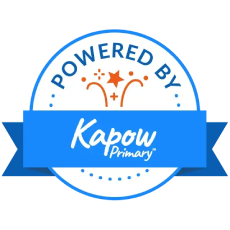Glossary of terms
Below is a glossary of terms used during our lessons teaching Computing.
• Abstraction Reducing complexity by focusing on the essential features of an algorithm or data representation and omitting unnecessary detail.
• Algorithm A precise step by step method for solving a problem. Named after Iranian mathematician Muhammad ibn Musa al-Khwarizmi.
• Application A self-contained program that performs a specific function for end users.
• Boolean logic / digital logic A system of reasoning with truth values, true and false, using logical operations such as and, or, and not. Named after British mathematician George Boole.
• Browser A piece of software that enables a user to locate, retrieve and display information on the world wide web.
• Complexity The way that a solution to a problem scales as the size of the input increases, considering both the number of computational steps and the memory space required.
• Computation Performing a calculation by executing the instructions of a program on a computational device.
• Computational device / digital device A computer or other programmable device that performs computation.
• Computational thinking The ability to analyse ways to solve problems using appropriate algorithms and data representations, taking account of the complexity of possible solutions.
• Computer science The scientific study of computation, applied to both hardware and software, covering both theoretical and practical concerns.
• Data Information which can be stored, retrieved and manipulated in digital form using digital devices.
• Debug To find, remove and / or change errors in computer code.
• Digital artifacts / digital content Images, videos, text or data, or a combination of these, which are made on a digital device.
• Digital literacy The ability to access and manipulate digital content and understand the implications of its creation and distribution.
• Data representation The various ways data can be represented as words, numbers and pictures in the memory of a computational device.
• E-safety Understanding and applying rules to mitigate against the risks to personal safety and privacy of personal information in using digital devices of all kinds.
• Function A small section of computational code that performs a specific operation. In particular, a function takes inputs, or arguments, and returns outputs, or results.
• Hardware Physical items of computing kit such as desktop hard drives, printers and scanners
• Input The data that feeds into a computation. A stimulus to which a real-time application will respond.
• Internet A global network of computers which are linked, allowing the exchange of data. It uses various data transfer protocols which can be seen in the top bar of a browser, such as Hyper Text Transfer Protocol (http).
• Logic A systematic approach to reasoning. The rules that underlie an algorithm used for an application. Can also refer to digital components in computer hardware.
• Network A number of computational devices connected together, allowing sharing of resources and cooperation between devices in the solution of a problem. Also the hardware used to establish connections between devices on a network.
• Operating system The program that enables the computer to start and access different sorts of software on the computer, examples include Microsoft Windows and iOS for Mac.
• Output The data that results from a computation. A response generated by a real-time application to stimulus.
• Procedure A small section of computational code that performs a specific operation. Unlike a function, a procedure does not return a result but may be to change the data stored in objects in computer memory.
• Program / code (verb) To create or modify a program.
• Program / code (noun) A sequence of instructions for a computational device, written in an appropriate programming language, for implementing an algorithm that manipulates appropriate data representations for solving a problem.
• Programming language A formal language for representing statements, or commands, and data values used in a program. A programming language has a precise syntax that defines the valid ways for combining the symbols used to denote variables and data values. Examples used on schools include Scratch, Python and SmallBASIC.
• Search technologies Algorithms used by applications known as search engines to trawl the internet for digital content matching search terms given by a user. Results are normally presented in the form of links to relevant content.
• Sequence A number of program statements, to be executed one after another.
• Software The programs that enable computers to undertake specific functions.
• Variable A symbol in the code for a program that represents a data value or data object that can be changed during the course of computation.












